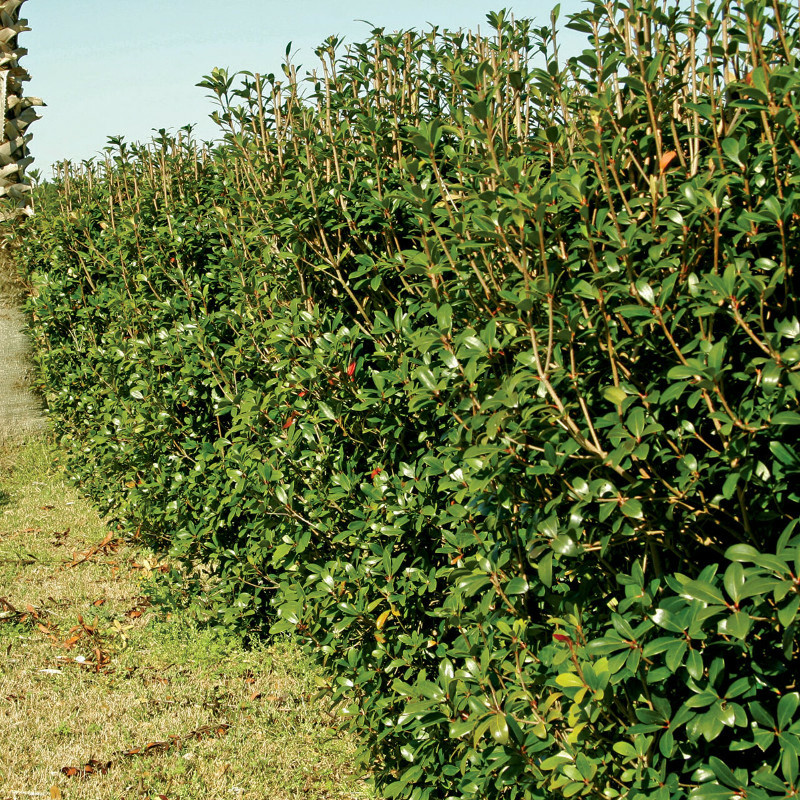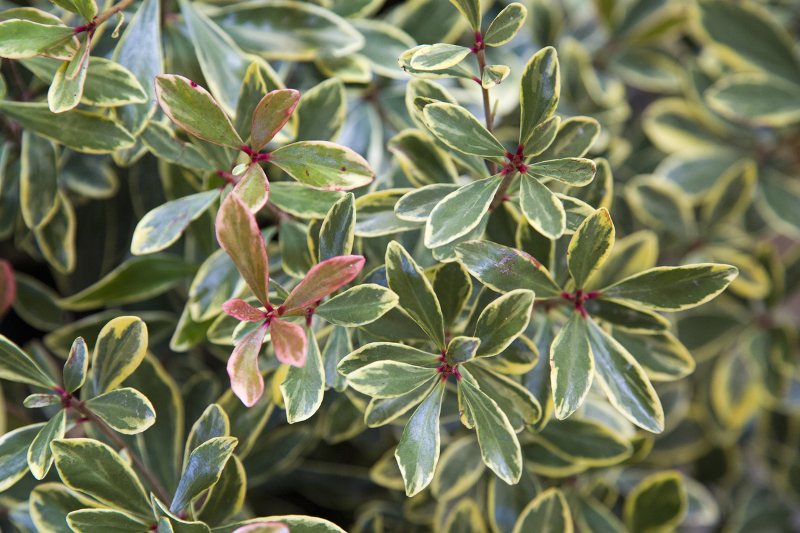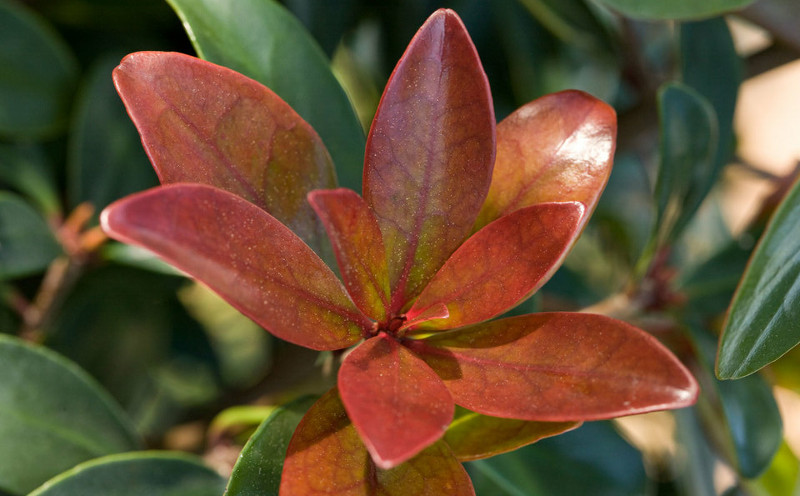Cleyera is a genus of 21 species of slow-growing multi-interest broadleaf evergreen shrubs native to Mexico and Central America, except one from Eastern Asia. The species Ternstroemia is in the family Pentaphylacaceae.
Ternstroemia gymnanthera are grown as hedges or in the mixed border in USDA zones 7-10, depending on variety, offering fragrant white to pale yellow flowers in early summer followed by red fruit, opening to reveal persistent black seeds, and green foliage tinted with bronze or burgundy. They offer a rounded growth habit and can range from six to 10 feet in height. It is sometimes called False Japanese Cleyera because it resembles Cleyera japonica, a similar plant native to Asia.
True Japanese Cleyera has hooked, pointed buds, while Ternstroemia gymnanthera has rounded buds and tends to have multiple trunks.

Planting Cleyeras
The ideal site is in full sun or partial shade. Soil should have superb drainage and be acidic with a pH of 5-6.5. If building a hedge, plant four to six feet apart. In a mixed border, allow six to nine feet between plants depending on the variety. Mulching while leaving the stem clear will help retain moisture. Fall or late winter/early spring would be the best time for transplanting if necessary.
Watering Cleyeras
Water regularly the first two years to establish, watering more deeply in times of high heat or drought. In successive years, once or twice a week should be enough. One inch of water a week is ideal. Clereya prefers evenly moist, not soggy wet soil. Mulching while leaving the stem clear will help retain moisture.

Fertilizing Cleyeras
The best time to fertilize cleyeras is in spring. Use a slow-release fertilizer formulated for woody shrubs. In the first year of planting, apply at half-strength while the plant is setting out its roots. Add acidic amendments if recommended by a soil test.
Pruning Cleyeras
Little pruning is needed for cleyeras. If you want to shape the plant, prune in spring [or after flowering] for shaping if needed. The most natural results will come from cutting back 1/3 of the tallest stems to the base or at least the center of the shrub for shaping rather than shearing the plant across the top. This creates the most natural appearance with the least amount of shock to the plant.
Caring For Cleyeras in Pots
Select a compact variety, and an appropriate size pot with good drainage. Fill with high-quality, organic soil mix with a pH of 5-6.5. Water well the first year or two to establish. Fertilize in spring with slow-release fertilizer made for woody plants. Pruning isn’t needed but can be done in spring also if desired.
If your area has significant winter rains, consider moving the pot under some open shelter like roof eaves against a warm wall. Mulch leaving the stem clear to retain moisture. If growing in zones 6 or 7, consider protecting the plant over the winter with frost cloth.

Winter Care for Cleyeras
Cleyeras dislike overly wet soil. Amend soil in fall with organic matter such as compost to promote drainage and adjust soil pH if indicated by a soil test. If growing in zones 6 or 7, mulch with organic matter and consider protecting the plant over the winter with frost cloth.
If your area is very rainy over the winter, a winter mulch of pebbles will repel excess water from the crown. Otherwise, enjoy the glossy foliage during the cold months of the year with minimal effort.
Cleyera For Sale
Common Cleyera Care Questions
Are Cleyeras drought-tolerant?
Cleyeras are fairly drought tolerant once they're established, however planting them in a location where they're protected from strong winds is advisable.
Can Cleyera grow in the shade?
Cleyera thrives in partial shade, with moist, nutrient-rich, well-draining soil, though they will tolerate full sun. If they're in full sun through the winter months, the leaves may get scorched by the sun.
How big do Cleyera get?
Generally speaking, at maturity, cleyera can be from 10 to 15 feet high and up to 10 feet wide, depending on the variety.
What are the common Cleyera shrub problems?
Cleyera is reasonably disease and pest free however can fall victim to leafspot, with can cause the shrub to lose its leaves. Leafspot presents with purple spots on the surface of the leaves. Cleyera does also occasionally have a problem with red spider mites, which suck the sap from the plants, causing the leaves to yellow, brown, then curl and die.
Have a question about Cleyera? Fill out the form below and we will try and get back to your question as soon as possible. We may even feature your question on this article to help other gardeners!
 |
Author Erica Browne Grivas - Published 2-08-2022 |
